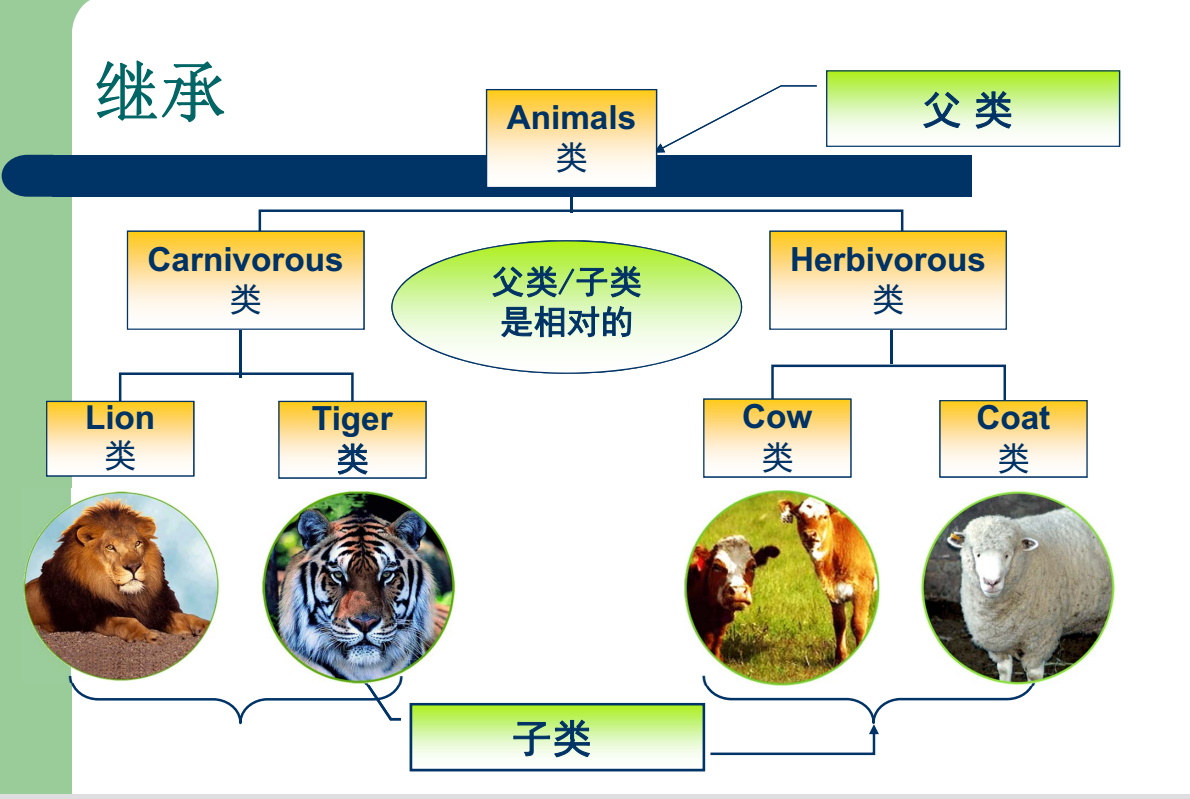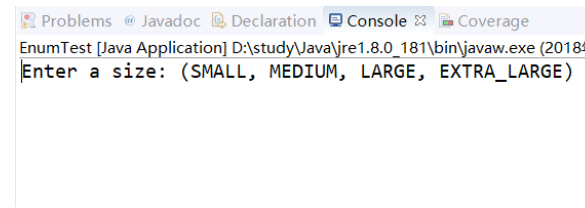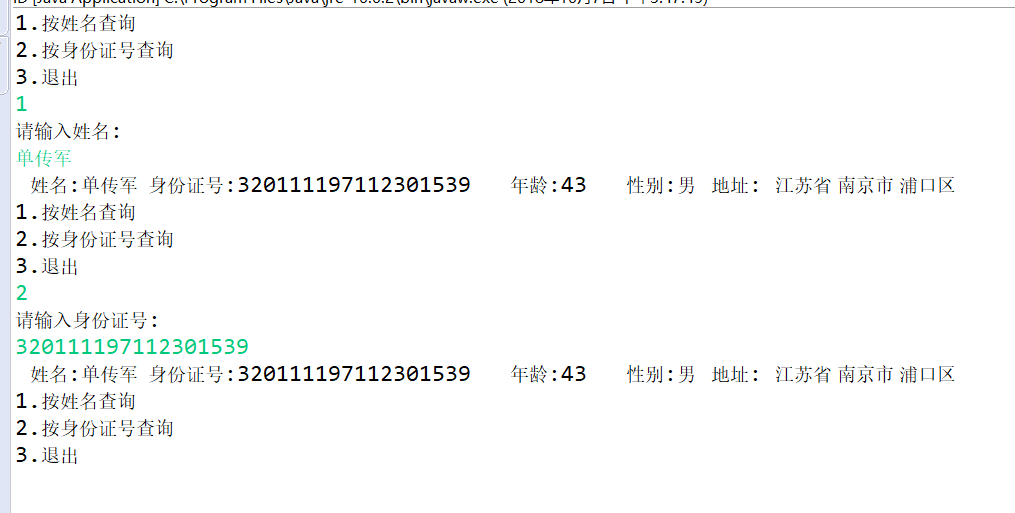一,理论学习部分

继承:用已有类来构建新类的一种机制。当定 义了一个新类继承了一个类时,这个新类就继 承了这个类的方法和域,同时在新类中添加新 的方法和域以适应新的情况。
多态性的概念(Polymorphism ) – 多态性泛指在程序中同一个符号在不同的情况 下具有不同解释的现象。 – 超类中定义的域或方法,被子类继承之后,可 以具有不同的数据类型或表现出不同的行为。 – 这使得同一个域或方法在超类及其各个子类中 具有不同的语义。 – 超类中的方法在子类中可方法重写。
一,实验内容
1、实验目的与要求
(1) 理解继承的定义;
(2) 掌握子类的定义要求
(3) 掌握多态性的概念及用法;
(4) 掌握抽象类的定义及用途;
(5) 掌握类中4个成员访问权限修饰符的用途;
(6) 掌握抽象类的定义方法及用途;
(7)掌握Object类的用途及常用API;
(8) 掌握ArrayList类的定义方法及用法;
(9) 掌握枚举类定义方法及用途。
2、实验内容和步骤
实验1: 导入第5章示例程序,测试并进行代码注释。
测试程序1:
Ÿ 在elipse IDE中编辑、调试、运行程序5-1 (教材152页-153页) ;
Ÿ 掌握子类的定义及用法;
Ÿ 结合程序运行结果,理解并总结OO风格程序构造特点,理解Employee和Manager类的关系子类的用途,并在代码中添加注释。
import java.time.*; //创建一个父类 public class Employee { private String name; private double salary; private LocalDate hireDay; public Employee(String name, double salary, int year, int month, int day) { this.name = name; this.salary = salary; hireDay = LocalDate.of(year, month, day); } public String getName() { return name; } public double getSalary() { return salary; } public LocalDate getHireDay() { return hireDay; } public void raiseSalary(double byPercent) { double raise = salary * byPercent / 100; salary += raise; } }
public class Manager extends Employee //关键字extends表明正在构造的新类派生于一个已存在的类 { private double bonus; //定义奖金 /** * @param name the employee's name * @param salary the salary * @param year the hire year * @param month the hire month * @param day the hire day */ public Manager(String name, double salary, int year, int month, int day) { super(name, salary, year, month, day); bonus = 0; } public double getSalary()
//提供一个新的方法 { double baseSalary = super.getSalary(); return baseSalary + bonus; } public void setBonus(double b) { bonus = b; } }
public class ManagerTest { public static void main(String[] args) { // 构建管理器对象 Manager boss = new Manager("Carl Cracker", 80000, 1987, 12, 15); boss.setBonus(5000); Employee[] staff = new Employee[3]; //用Manager和Employee对象填充staff数组 staff[0] = boss; staff[1] = new Employee("Harry Hacker", 50000, 1989, 10, 1); staff[2] = new Employee("Tommy Tester", 40000, 1990, 3, 15); // 打印所有Employee对象的信息 for (Employee e : staff) System.out.println("name=" + e.getName() + ",salary=" + e.getSalary()); } }

测试程序2:
Ÿ 编辑、编译、调试运行教材PersonTest程序(教材163页-165页);
Ÿ 掌握超类的定义及其使用要求;
Ÿ 掌握利用超类扩展子类的要求;
Ÿ 在程序中相关代码处添加新知识的注释。
public abstract class Person //建立一个超类 { public abstract String getDescription(); private String name; public Person(String name) { this.name = name; } public String getName() { return name; } }
import java.time.*; public class Employee extends Person //person类继承employee类 { private double salary; private LocalDate hireDay; public Employee(String name, double salary, int year, int month, int day) { super(name); this.salary = salary; hireDay = LocalDate.of(year, month, day); } public double getSalary() { return salary; } public LocalDate getHireDay() { return hireDay; } public String getDescription() { return String.format("an employee with a salary of $%.2f", salary); //字符串类型格式化采用format()方法 } public void raiseSalary(double byPercent) { double raise = salary * byPercent / 100; salary += raise; } }
public class Student extends Person { private String major; /** * @param nama the student's name * @param major the student's major */ public Student(String name, String major) { // 将n传递给父类构造函数 super(name); this.major = major; } public String getDescription() { return "a student majoring in " + major; } }
public class PersonTest { public static void main(String[] args) { Person[] people = new Person[2]; // 用Student和Employee对象填充人员数组 people[0] = new Employee("Harry Hacker", 50000, 1989, 10, 1); people[1] = new Student("Maria Morris", "computer science"); // 打印所有Person对象的名称和描述 for (Person p : people) System.out.println(p.getName() + ", " + p.getDescription()); } }

测试程序3:
Ÿ 编辑、编译、调试运行教材程序5-8、5-9、5-10,结合程序运行结果理解程序(教材174页-177页);
Ÿ 掌握Object类的定义及用法;
Ÿ 在程序中相关代码处添加新知识的注释。
public class EqualsTest { public static void main(String[] args) { Employee alice1 = new Employee("Alice Adams", 75000, 1987, 12, 15); Employee alice2 = alice1; Employee alice3 = new Employee("Alice Adams", 75000, 1987, 12, 15); Employee bob = new Employee("Bob Brandson", 50000, 1989, 10, 1); System.out.println("alice1 == alice2: " + (alice1 == alice2)); System.out.println("alice1 == alice3: " + (alice1 == alice3)); System.out.println("alice1.equals(alice3): " + alice1.equals(alice3)); System.out.println("alice1.equals(bob): " + alice1.equals(bob)); System.out.println("bob.toString(): " + bob); Manager carl = new Manager("Carl Cracker", 80000, 1987, 12, 15); Manager boss = new Manager("Carl Cracker", 80000, 1987, 12, 15); boss.setBonus(5000); System.out.println("boss.toString(): " + boss); System.out.println("carl.equals(boss): " + carl.equals(boss)); System.out.println("alice1.hashCode(): " + alice1.hashCode()); System.out.println("alice3.hashCode(): " + alice3.hashCode()); System.out.println("bob.hashCode(): " + bob.hashCode()); System.out.println("carl.hashCode(): " + carl.hashCode()); } }
import java.time.*; import java.util.Objects; public class Employee { private String name; private double salary; private LocalDate hireDay; public Employee(String name, double salary, int year, int month, int day) { this.name = name; this.salary = salary; hireDay = LocalDate.of(year, month, day); } public String getName() { return name; } public double getSalary() { return salary; } public LocalDate getHireDay() { return hireDay; } public void raiseSalary(double byPercent) { double raise = salary * byPercent / 100; salary += raise; } public boolean equals(Object otherObject) { // 快速测试,看看这些对象是否相同 if (this == otherObject) return true; // 如果显式参数为空,则必须返回false if (otherObject == null) return false; // 如果类不匹配,它们就不能相等 if (getClass() != otherObject.getClass()) return false; // 现在我们知道otherObject是一个非空雇员 Employee other = (Employee) otherObject; // 测试字段是否具有相同的值 return Objects.equals(name, other.name) && salary == other.salary && Objects.equals(hireDay, other.hireDay); } public int hashCode() { return Objects.hash(name, salary, hireDay); } public String toString() { return getClass().getName() + "[name=" + name + ",salary=" + salary + ",hireDay=" + hireDay + "]"; } }
public class Manager extends Employee { private double bonus; public Manager(String name, double salary, int year, int month, int day) { super(name, salary, year, month, day); bonus = 0; } public double getSalary() { double baseSalary = super.getSalary(); return baseSalary + bonus; } public void setBonus(double bonus) { this.bonus = bonus; } public boolean equals(Object otherObject) { if (!super.equals(otherObject)) return false; Manager other = (Manager) otherObject; //检查这个和其他是否属于同一个类 return bonus == other.bonus; } public int hashCode() { return java.util.Objects.hash(super.hashCode(), bonus); } public String toString() { return super.toString() + "[bonus=" + bonus + "]"; } }

测试程序4:
1)在elipse IDE中调试运行程序5-11(教材182页),结合程序运行结果理解程序;
2)掌握ArrayList类的定义及用法;
3)在程序中相关代码处添加新知识的注释。
import java.util.*;
public class ArrayListTest
{
public static void main(String[] args)
{
// 用三个雇员对象填充工作人员数组列表
ArrayList<Employee> staff = new ArrayList<>();
staff.add(new Employee("Carl Cracker", 75000, 1987, 12, 15));
staff.add(new Employee("Harry Hacker", 50000, 1989, 10, 1));
staff.add(new Employee("Tony Tester", 40000, 1990, 3, 15));
// 把每个人的薪水提高5%
for (Employee e : staff)
e.raiseSalary(5);
// 打印所有员工对象的信息
for (Employee e : staff)
System.out.println("name=" + e.getName() + ",salary=" + e.getSalary() + ",hireDay="
+ e.getHireDay());
}
}
package arrayList;
import java.time.*;
public class Employee
{
private String name;
private double salary;
private LocalDate hireDay;
public Employee(String name, double salary, int year, int month, int day)
{
this.name = name;
this.salary = salary;
hireDay = LocalDate.of(year, month, day);
}
public String getName()
{
return name;
}
public double getSalary()
{
return salary;
}
public LocalDate getHireDay()
{
return hireDay;
}
public void raiseSalary(double byPercent)
{
double raise = salary * byPercent / 100;
salary += raise;
}
}

测试程序5:
1)编辑、编译、调试运行程序5-12(教材189页),结合运行结果理解程序;
2)掌握枚举类的定义及用法;
3)在程序中相关代码处添加新知识的注释。
import java.util.*; public class EnumTest { public static void main(String[] args) { Scanner in = new Scanner(System.in); System.out.print("Enter a size: (SMALL, MEDIUM, LARGE, EXTRA_LARGE) "); String input = in.next().toUpperCase(); Size size = Enum.valueOf(Size.class, input); System.out.println("size=" + size); System.out.println("abbreviation=" + size.getAbbreviation()); if (size == Size.EXTRA_LARGE) System.out.println("Good job--you paid attention to the _."); } } enum Size { SMALL("S"), MEDIUM("M"), LARGE("L"), EXTRA_LARGE("XL"); private Size(String abbreviation) { this.abbreviation = abbreviation; } public String getAbbreviation() { return abbreviation; } private String abbreviation; }

实验2:编程练习1
1)定义抽象类Shape:
属性:不可变常量double PI,值为3.14;
方法:public double getPerimeter();public double getArea())。
2)让Rectangle与Circle继承自Shape类。
3)编写double sumAllArea方法输出形状数组中的面积和和double sumAllPerimeter方法输出形状数组中的周长和。
main方法中
1)输入整型值n,然后建立n个不同的形状。如果输入rect,则再输入长和宽。如果输入cir,则再输入半径。
2) 然后输出所有的形状的周长之和,面积之和。并将所有的形状信息以样例的格式输出。
3) 最后输出每个形状的类型与父类型,使用类似shape.getClass()(获得类型),shape.getClass().getSuperclass()(获得父类型);
思考sumAllArea和sumAllPerimeter方法放在哪个类中更合适?
输入样例:
3
rect
1 1
rect
2 2
cir
1
输出样例:
18.28
8.14
[Rectangle [width=1, length=1], Rectangle [width=2, length=2], Circle [radius=1]]
class Rectangle,class Shape
class Rectangle,class Shape
class Circle,class Shape
package wzc;
import java.math.*;
import java.util.*;
public class calculate
{
public static void main(String[] args)
{
Scanner in = new Scanner(System.in);
String rect = "rect";
String cir = "cir";
int n = in.nextInt();
shape[] score = new shape[n];
for(int i=0;i<n;i++)
{
System.out.println(" (rect or cir):");
String input = in.next();
if(input.equals(rect))
{
double length = in.nextDouble();
double width = in.nextDouble();
System.out.println("Rectangle["+"length:"+length+" width:"+width+"]");
score[i] = new Rectangle(width,length);
}
if(input.equals(cir))
{
double radius = in.nextDouble();
System.out.println("Circle["+"radius:"+radius+"]");
score[i] = new Circle(radius);
}
}
calculate c = new calculate();
System.out.println(c.sumAllPerimeter(score));
System.out.println(c.sumAllArea(score));
for(shape s:score)
{
System.out.println(s.getClass()+", "+s.getClass().getSuperclass());
}
}
public double sumAllArea(shape score[])
{
double sum = 0;
for(int i = 0;i<score.length;i++)
sum+= score[i].getArea();
return sum;
}
public double sumAllPerimeter(shape score[])
{
double sum = 0;
for(int i = 0;i<score.length;i++)
sum+= score[i].getPerimeter();
return sum;
}
}
package wzc; public abstract class shape { double PI = 3.14; public abstract double getPerimeter(); public abstract double getArea(); }
package wzc; public class Rectangle extends shape { private double width; private double length; public Rectangle(double w,double l) { this.width = w; this.length = l; } public double getPerimeter() { double Perimeter = (width+length)*2; return Perimeter; } public double getArea() { double Area = width*length; return Area; } public String toString() { return getClass().getName() + "[ width=" + width + "]"+ "[length=" + length + "]"; } }
package wzc; public class Circle extends shape { private double radius; public Circle(double r) { radius = r; } public double getPerimeter() { double Perimeter = 2*PI*radius; return Perimeter; } public double getArea() { double Area = PI*radius*radius; return Area; } public String toString() { return getClass().getName() + "[radius=" + radius + "]"; } }

实验3: 编程练习2
编制一个程序,将身份证号.txt 中的信息读入到内存中,输入一个身份证号或姓名,查询显示查询对象的姓名、身份证号、年龄、性别和出生地。
package IDcard; import java.io.BufferedReader; import java.io.File; import java.io.FileInputStream; import java.io.FileNotFoundException; import java.io.IOException; import java.io.InputStreamReader; import java.util.ArrayList; import java.util.Scanner; public class ID { public static People findPeopleByname(String name) { People flag = null; for (People people : peoplelist) { if(people.getName().equals(name)) { flag = people; } } return flag; } public static People findPeopleByid(String id) { People flag = null; for (People people : peoplelist) { if(people.getnumber().equals(id)) { flag = people; } } return flag; } private static ArrayList<People> peoplelist; public static void main(String[] args) { peoplelist = new ArrayList<People>(); Scanner scanner = new Scanner(System.in); File file = new File("D:\\身份证号.txt"); try { FileInputStream files = new FileInputStream(file); BufferedReader in = new BufferedReader(new InputStreamReader(files)); String temp = null; while ((temp = in.readLine()) != null) { Scanner linescanner = new Scanner(temp); linescanner.useDelimiter(" "); String name = linescanner.next(); String number = linescanner.next(); String sex = linescanner.next(); String age = linescanner.next(); String place = linescanner.nextLine(); People people = new People(); people.setName(name); people.setnumber(number); people.setage(age); people.setsex(sex); people.setplace(place); peoplelist.add(people); } } catch (FileNotFoundException e) { System.out.println("文件未找到"); e.printStackTrace(); } catch (IOException e) { System.out.println("文件读取错误"); e.printStackTrace(); } boolean isTrue = true; while (isTrue) { System.out.println("1.按姓名查询"); System.out.println("2.按身份证号查询"); System.out.println("3.退出");int nextInt = scanner.nextInt(); switch (nextInt) { case 1: System.out.println("请输入姓名:"); String peoplename = scanner.next(); People people = findPeopleByname(peoplename); if (people != null) { System.out.println(" 姓名:"+ people.getName() + " 身份证号:"+ people.getnumber() + " 年龄:"+ people.getage()+ " 性别:"+ people.getsex()+ " 地址:"+ people.getplace() ); } else { System.out.println("不存在此人"); } break; case 2: System.out.println("请输入身份证号:"); String peopleid = scanner.next(); People people1 = findPeopleByid(peopleid); if (people1 != null) { System.out.println(" 姓名:"+ people1.getName()+ " 身份证号:"+ people1.getnumber()+ " 年龄:"+ people1.getage()+ " 性别:"+ people1.getsex()+ " 地址:"+ people1.getplace()); } else { System.out.println("不存在此人"); } break; case 3: isTrue = false; System.out.println("byebye!"); break; default: System.out.println("输入有误"); } } } }
package IDcard; public class People { private String name; private String number; private String age; private String sex; private String place; public String getName() { return name; } public void setName(String name) { this.name = name; } public String getnumber() { return number; } public void setnumber(String number) { this.number = number; } public String getage() { return age; } public void setage(String age ) { this.age = age; } public String getsex() { return sex; } public void setsex(String sex ) { this.sex = sex; } public String getplace() { return place; } public void setplace(String place) { this.place = place; } }

总结:通过前一周的学习,我初步了解有关继承类的知识。在编写程序时,使用继承类更能简化程序。通过课堂学习和课后运行程序,了解了子类和父类的关系。另外,学习了抽象类的用法,在运行程序的过程中,加深了对它的理解。但却无法真正的运用于实践当中,面对所敲代码无法通过,各种语法错误,使我深深的意识到自己的知识掌握还远远不够,最终还是借助了同学的帮助,让他给我讲解了他所写的代码。才使得作业得以完成。今后一定要自主学习,逐步消化课堂中学习的内容。
